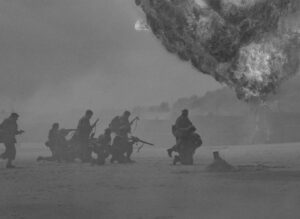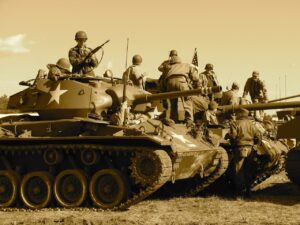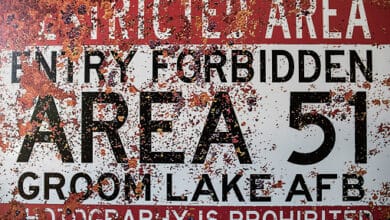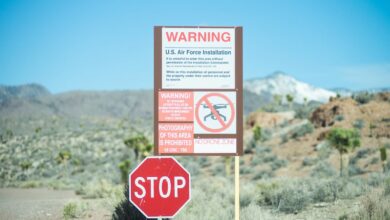WW2 Greatest Raids
WW2 Greatest Raids & Battles
You’ve heard about World War II, but the daring raids that played a pivotal role in its outcome may still be unknown to you. In fact, elite groups like the US Army Rangers and British Special Air Service led some of history’s bravest missions during this global conflict.
In this article, we will take a look at these spectacular operations and reveal how they contributed enormously to shaping World War II’s results. Prepare yourself for an exhilarating journey into history’s greatest war raids!
Overview of WWII’s Greatest Raids
World War II was a time of immense bravery and strategic brilliance, with numerous daring raids shaping the outcome of the war. Elite groups like the US Army Rangers, British Special Air Service, and Black Devil Brigade played pivotal roles in these historic missions.
In this article, we will explore some of the greatest raids of World War II that showcased courage, commitment, and daring actions. So get ready to delve into the fascinating world of wartime heroics!
Importance of key moments in shaping the outcome of the war
Elite forces like the US Army Rangers, British Special Air Service, and Black Devil Brigade courageously executed key moments that significantly influenced the war’s outcome. A prime example is June 6th, 1944: The US Army Rangers initiated a momentous amphibious assault in history during France’s Allied invasion.
High-stakes missions launched on specific locations led to formidable damage to enemy lines and economies. For instance, the British Commandos ingeniously disguised their ship as an enemy destroyer for Operation Chariot in 1942; they battered St.
Nazaire — a crucial German port — caused immense destruction of infrastructure and resources. Similarly, other absolute bravados included Operation Collar on Boulogne and Le Touquet in June 1940 with a troop force of two hundred men; followed by Operation Ambassador raiding Guernsey & Channel Islands within a month with one hundred forty soldiers aboard; leading up to another strategic engagement – Operation Claymore involving eight hundred brave hearts aiming at Norway’s Lofoten Islands on March 3rd, 1941.
Such pivotal actions undoubtedly forged battlefront advances contributing immensely towards ending World War II successfully for the Allies.
Focus on raids conducted by elite groups such as US Army Rangers, British Special Air Service, and Black Devil Brigade
Elite groups like the US Army Rangers, British Special Air Service (SAS), and Black Devil Brigade played a significant role in World War II through their daring raids. The US Army Rangers led the largest amphibious assault in history during the Allied invasion of France on June 6th, 1944.
Meanwhile, the SAS executed covert missions behind enemy lines, disrupting Axis operations and gathering intelligence. Not to be outdone, the Black Devil Brigade conducted dangerous nighttime raids on German positions in Italy.
These elite soldiers were instrumental in shaping key moments and outcomes of the war with their courage and commitment to their missions.
Rangers Lead The Way
The US Army Rangers demonstrated exceptional courage and commitment during the Allied Invasion of France on June 6th, 1944.
Details of the US Army Rangers’ crucial mission during the Allied Invasion of France on June 6th, 1944
The US Army Rangers played a pivotal role in the Allied Invasion of France on June 6th, 1944. Tasked with leading the way in one of the largest amphibious assaults in history, these elite soldiers displayed immense courage and commitment.
Despite facing heavy enemy fire and treacherous conditions, they successfully scaled the cliffs of Pointe du Hoc to neutralize German artillery positions that threatened the invasion force.
Their daring mission not only secured a vital strategic objective but also showcased their exceptional combat skills and unwavering determination.
The US Army Rangers’ crucial contribution during this historic operation exemplifies their indomitable spirit and unwavering dedication to duty during World War II.
Mountain Massacre
A specialized unit takes on a daring operation in treacherous mountain terrain, leading to an unforgettable and heroic mission. Read more to learn about this incredible raid during World War II.
Description of the daring operation carried out by a specialized unit in a mountainous region
In a daring operation carried out by a specialized unit in a mountainous region, elite soldiers showcased their courage and commitment during World War II. With strategic objectives in mind, these brave troops executed military tactics that played crucial roles in shaping the outcome of the war.
Their covert operations in challenging terrains demonstrated both their skill and determination as they navigated through treacherous landscapes to accomplish their missions. These heroic actions in mountainous regions showcased the resilience and resourcefulness of the Allied forces against formidable Axis powers.
Hitler’s Last Bridge
The raid targeting Hitler’s Last Bridge showcased the determination and resourcefulness of Allied forces in their efforts to disrupt German supply lines.
Highlighting the significance of a raid targeting a key bridge near the end of the war
In the later stages of World War II, a daring raid aimed at a crucial bridge holds immense significance. This strategic operation was conducted by elite soldiers who displayed exceptional courage and commitment.
The successful targeting of this key bridge disrupted enemy supply lines, hampering their ability to reinforce their troops and slowing down their offensive efforts. This raid played a pivotal role in the eventual outcome of the war, tipping the scales in favor of the Allied forces.
It stands as a testament to the effectiveness of tactical planning and execution in achieving important objectives during wartime.
Strike From The Sky
Examining the crucial role of airborne forces in executing strategic raids during WWII.
Examination of the role of airborne forces in executing strategic raids
Airborne forces played a crucial role in executing strategic raids during World War II. These elite soldiers, including the US Army Rangers, British Special Air Service, and Black Devil Brigade, conducted daring and high-risk missions to disrupt enemy operations and achieve key objectives.
With their courage and commitment, airborne troops were able to launch surprise attacks from the sky, infiltrate enemy territory undetected, and secure vital targets. By employing their specialized training and equipment, they greatly contributed to changing the course of the war through their effective execution of strategic raids.
WWII’s Greatest Raids
World War II saw dramatic raids and daring bombing operations carried out by the Allies against key Axis targets. These audacious strikes required tremendous skill, courage, and sacrifice from Allied aviators and commandos.
Though some inflicted only limited material damage, the psychological and strategic impact of these raids was immense. They boosted Allied morale while showing the Axis powers their vulnerabilities and weaknesses.
This article explores some of the most dramatic Allied air raids of World War II in Europe. From the ingenious bouncing bombs used against German dams during Operation Chastise to the heavy water sabotage raids in Norway that hindered the Nazi atomic program, these are some of WWII’s most incredible special operations.
Though they varied in size and scope, these bombing raids and commando strikes demonstrated Allied capabilities and resolve in the face of determined Axis opposition. The innovation and bravery shown by Allied forces during these raids played a key role in the ultimate victory over the Axis powers.
The Doolittle Raid
On April 18, 1942, just a few months after the Japanese attack on Pearl Harbor, the United States launched a surprise air raid on Tokyo and other Japanese cities. Led by Lieutenant Colonel James “Jimmy” Doolittle, the raid involved 16 B-25 Mitchell medium bombers that took off from the aircraft carrier USS Hornet deep in the Western Pacific.
The bombers were not able to carry enough fuel for a round-trip flight, so the plan was for them to bomb their targets and then continue on to friendly airfields in China. However, all of the bombers either crashed or the crews bailed out over China after bombing their targets. While the material damage inflicted was relatively minor, the raid provided a tremendous psychological boost to American morale while damaging Japanese morale. It also signaled that the Japanese homeland was vulnerable to air attack.
The Doolittle Raid was the first American air raid to strike the Japanese home islands. It demonstrated American resolve and boosted morale after the string of Japanese victories in the months following Pearl Harbor. Though a propaganda victory, the raid did little material damage. However, it forced the Japanese to pull back forces for home island defense, contributing to the Allied victory at the Battle of Midway the following month.
The Bruneval Raid
On the night of February 27, 1942, British paratroopers conducted a daring raid on a German radar station at Bruneval, France. The raid, officially called Operation Biting, had several important objectives. The British wanted to capture key German radar components in order to better understand German advances in radar technology. They also wanted to capture German radar technicians who could provide crucial intelligence on German radar capabilities.
A small team of 120 elite British paratroopers landed near the radar station shortly after midnight. They quickly secured the area and dismantled components of the radar antenna and transmitter. German troops soon arrived, and the paratroopers engaged them in a fierce firefight. Eventually, they were able to make an orderly withdrawal under the cover of naval gunfire support from the English Channel.
The Bruneval Raid provided British scientists and strategists with invaluable information about the latest German radar systems. This knowledge helped the British interfere with and confuse German radar during bombing raids later in the war. The raid also demonstrated the capabilities of specially trained airborne forces, which were still a relatively new military innovation at the time.
Operation Chariot – The St Nazaire Raid
One of the most daring British raids of WWII occurred in March 1942 against the heavily defended German-held drydock at St Nazaire, France. Codenamed Operation Chariot, the audacious plan involved ramming an obsolete destroyer packed with explosives into the drydock gates. Commandos would then disembark and demolition charges to destroy other docks and infrastructure.
The converted destroyer HMS Campbeltown set out from England on March 26 along with a force of small motor launches packed with over 600 British sailors and commandos. Under cover of darkness, they rammed the dock gates at St Nazaire early the following morning. The delayed-action explosives aboard the Campbeltown successfully destroyed the vital drydock gates several hours later.
After the Campbeltown breached the gates, the commandos poured into St Nazaire and engaged in fierce urban combat with German defenders. They were unable to destroy the main pumping equipment for the drydock but did major damage to the port facilities. Of the 611 raiders, 228 were killed or captured during the raid. However, it was considered a success since the destruction of the drydock gates severely reduced the availability of the only drydock on the Atlantic capable of servicing the German battleship Tirpitz.
The extraordinary St Nazaire Raid showed the courage and fighting spirit of the British early in the war when morale was still recovering from Dunkirk. It was the largest commando raid ever conducted at the time.
Operation Gunnerside – The Norwegian Heavy Water Raid
In late 1942 and early 1943, a series of Allied raids targeted key facilities in Nazi-occupied Norway, producing heavy water for Germany’s secret nuclear program. Heavy water was essential for controlling nuclear fission reactions, and limiting German access to it was a top priority.
The most famous of these raids was Operation Gunnerside. In February 1943, a small team of Norwegian commandos trained in winter warfare and explosives were parachuted into the wilderness. They then skied to the Norsk Hydro plant, where heavy water was being produced.
After reconnoitering the lightly guarded facility, the commandos stealthily entered the basement and planted timed explosives on the heavy water electrolysis chambers. The covering explosives went off as planned, and the demolition team escaped by skiing 200 miles across the wilderness to neutral Sweden.
The Operation Gunnerside raid on the Norsk Hydro plant was extremely successful. The sabotage action set the Nazi atomic weapons program back by at least a year. Later, Allied bombing raids and additional raids by Norwegian commandos ensured that the Germans were never able to recover their heavy water production capabilities. The heroism and ingenuity of the Gunnerside raiders delivered a major blow to the Nazi’s secret weapons ambitions. Read also about: Hitler’s Enormous Gun
Operation Chastise – The Dambusters Raid
Operation Chastise, better known as the Dambusters Raid, was an audacious British bombing operation against German dams in May 1943. The mission called for specially modified RAF Lancaster bombers to drop massive bouncing bombs codenamed “Upkeep” to breach three dams providing hydroelectric power and water critical to German industrial operations in the Ruhr valley.
After weeks of intensive low-level flight training over water, 19 Lancaster bombers divided into three formations departed on the night of May 16-17. Led by Wing Commander Guy Gibson, the bombers flew at extremely low altitudes across occupied Europe and into Germany to avoid radar detection.
The Mohne and Edersee Dams were successfully breached, causing catastrophic flooding of factories and infrastructure downstream. A third dam, the Sorpe, received hits but remained intact. Eight of the 19 bombers were lost, with 53 of 133 airmen killed during the raid.
While the Dambusters Raid did not permanently cripple German industrial output as intended, it was a tremendous propaganda coup and morale boost for the British. It demonstrated Allied resolve, ingenuity, and courage in the face of German dominance on the continent at that stage of the war. The technology and tactics pioneered during Chastise would influence all future low-level precision bombing efforts by the Allies.
Operation Tidal Wave – The Oil Campaign Against Ploiești
Seeking to deprive Germany of vital oil supplies, the Allies targeted the heavily defended refineries around Ploiești, Romania, in a massive air raid codenamed Operation Tidal Wave on August 1, 1943. Nearly 180 B-24 Liberator heavy bombers took off from airfields in North Africa on the daring low-level mission against what was considered the most heavily defended target outside of Germany.
Flying below radar coverage into Romania, the bombers arrived at treetop level and released bombs on six oil refineries around Ploiești. The surprise attack inflicted major damage, including the total destruction of two refineries. However, pilots faced concentrated anti-aircraft fire and over 250 German fighters that inflicted severe losses. Over 300 airmen were killed or captured, and 54 of the B-24 bombers were lost.
Though deemed a tactical failure due to losses, Operation Tidal Wave had a major strategic impact. The destruction of Ploiești’s refining capabilities reduced Germany’s oil production by up to a third. Subsequent Allied bomber raids on Ploiești later in the war further degraded Nazi fuel supplies, severely crippling military operations. The Ploiești raids highlighted the immense courage of Allied airmen and helped pave the way to victory.
Operation Jericho – Amiens Prison Raid
As the Normandy Invasion approached, the Allies sought to prevent the Germans from executing French Resistance and political prisoners. On February 18, 1944, Allied bombers conducted a daring low-level raid against Amiens Prison in German-occupied France.
Eighteen Mosquito and Typhoon fighter-bombers braved heavy anti-aircraft fire to precision bomb the prison walls and strafe guard positions. The attack created a massive breach in the prison’s perimeter walls, allowing over 700 prisoners to escape.
While many were recaptured by German forces, important Resistance leaders and French officers were able to get away and continue resistance activities in coordination with the D-Day landings. The raid also helped motivate Resistance efforts by demonstrating the Allies’ commitment to liberating France.
The Amiens Prison Raid was celebrated as a symbolic blow against the Germans on the eve of D-Day, showing Allied capabilities and will to liberate occupied Europe. Though smaller in scale than other dramatic raids, the precision and daring of Operation Jericho further undermined German morale while boosting French hopes for liberation.
Operation Carthage – The Copenhagen Shell House Raid
In the lead-up to Germany’s surrender in Denmark, the Royal Air Force launched a tactical bombing raid codenamed Operation Carthage against the Gestapo headquarters in the Shell Building in Copenhagen on March 21, 1945. The goal was to disrupt German forces and free captured Danish Resistance fighters hours before a ceasefire was to take effect.
The raid involved a low-level attack by around 80 RAF Mosquito fighter-bombers down a narrow corridor through the center of Copenhagen. The Shell Building was severely damaged, limiting Gestapo capability in the final days of occupation. 18 prisoners were freed, though over 100 civilians were unfortunately killed by errant bombs.
While collateral damage was significant and more prisoners had already been moved from the site, the Shell House Raid did strike a symbolic blow against the much-hated Gestapo in Denmark. It demonstrated the RAF’s precision bombing capabilities on difficult urban targets using fast, low-flying Mosquitos. The raid also further weakened Germany’s tenuous control of Denmark in the closing days of the war in Europe.
Operation Bellicose – Shelling of Bordeaux
In one of the first British special operations raids of WWII, a small team of Royal Navy volunteers embarked on a covert mission codenamed Operation Bellicose in June 1940. Their objective was to attack the French port of Bordeaux, demonstrating British resolve to continue fighting after the fall of France.
Six British motor launches stealthily sailed across the English Channel and slipped into the mouth of the Gironde estuary on the night of June 20-21. Eluding German shore batteries and patrol boats, they proceeded upriver to Bordeaux’s sprawling harbor. When within range, they revealed themselves and opened fire on merchant ships and dock infrastructure with small deck guns.
The British boats unleashed about 50 rounds of high explosive shells into the unsuspecting port facilities within only 8 minutes. Though material damage was minimal, the psychological impact was immense. Operation Bellicose showed that the British could strike at will even after the Dunkirk evacuations. Germany was forced to divert forces to coastal defense. British morale also received a boost during a dark time.
Operation Frankton – The Cockleshell Heroes Raid
In 1942, a group of 12 Royal Marine volunteers embarked on a daring covert raid to paddle canoes 90 miles up the Gironde estuary to attack German cargo ships at Bordeaux. Codenamed Operation Frankton, it is considered one of the most courageous British raids of the war.
The “Cockleshell Heroes” set out from England in folding canoes toward the end of November. However, only two canoes reached the target area; the other crews had either capsized, been captured, or decided to turn back. The two successful crews planted limpet mines on several merchant ships, sinking one. Unable to make the return paddle trip, the Marines scuttled their canoes and attempted to escape overland but were eventually captured.
While material results were limited, the raid shocked German forces and forced the diversion of troops to coastal security duties. The courage and daring of the Cockleshell Heroes became a propaganda coup. Though 9 men died, the raid was an inspirational story of audacity and bravery in the face of long odds.
Operation Carthage – Shell House 2nd Wave
As the first wave of bombers hit the Shell Building in Copenhagen on March 21, 1945, a second wave approached consisting of 15 de Havilland Mosquito fighter-bombers. However, with smoke obscuring visibility and intense anti-aircraft fire, the second wave accidentally dropped their bombs near a school, killing over 80 children and teachers.
The tragedy further marred Operation Carthage despite its intent to disrupt the Gestapo. When reports reached British leadership, orders were immediately given to stop the second wave. However, only some of the mosquitoes got the abort messages in time. Communication failures combined with deteriorating weather and battle conditions led part of the second wave to carry out their attack, unaware civilians had been killed minutes before.
The second accidental bombing underscored the chaos of urban warfare. It also showed the risks of pushing quickly planned raids at the end of the war when German forces were naturally intermingled among civilians in cities. While Operation Carthage did hit the Shell Building, unintended consequences can outweigh the intended results.
Conclusion
From the Doolittle Raid in 1942 to the Shell House Raid in 1945, Allied air raids on Axis targets required tremendous bravery, skill, and sacrifice. Though some had limited material impact, these dramatic operations all delivered symbolic blows to Axis morale while boosting Allied resolve and fighting spirit.
The ingenuity and heroism of the aviators who conducted these daring strikes played a key role in the eventual Allied victory in WWII. Their exploits stand as lasting testaments to the Allied commitment to victory at any cost against tyranny, aggression, and oppression. So, these were the greatest WWII raids.
FAQs
What were some of the greatest raids during WW2?
Some of the greatest raids during WW2 include Operation Overlord (D-Day), the Raid on St. Nazaire, the Tokyo Doolittle Raid, and Operation Market Garden.
Who planned and executed these raids in WW2?
The raids in WW2 were planned and executed by various military forces, such as the Allied forces led by General Dwight D. Eisenhower and Admiral Lord Louis Mountbatten.
What were the objectives of these raids during WW2?
The objectives of these raids during WW2 varied depending on the mission, but they often aimed to disrupt enemy operations, gather intelligence, capture important targets or territories, or weaken enemy morale.
How did these raids impact the outcome of WW2?
These raids played a significant role in shaping the outcome of WW2 by weakening Axis powers strategically and boosting Allied morale. They also paved the way for larger offensives and ultimately contributed to victory for Allied forces.

